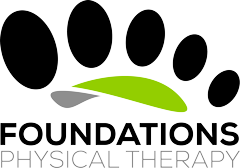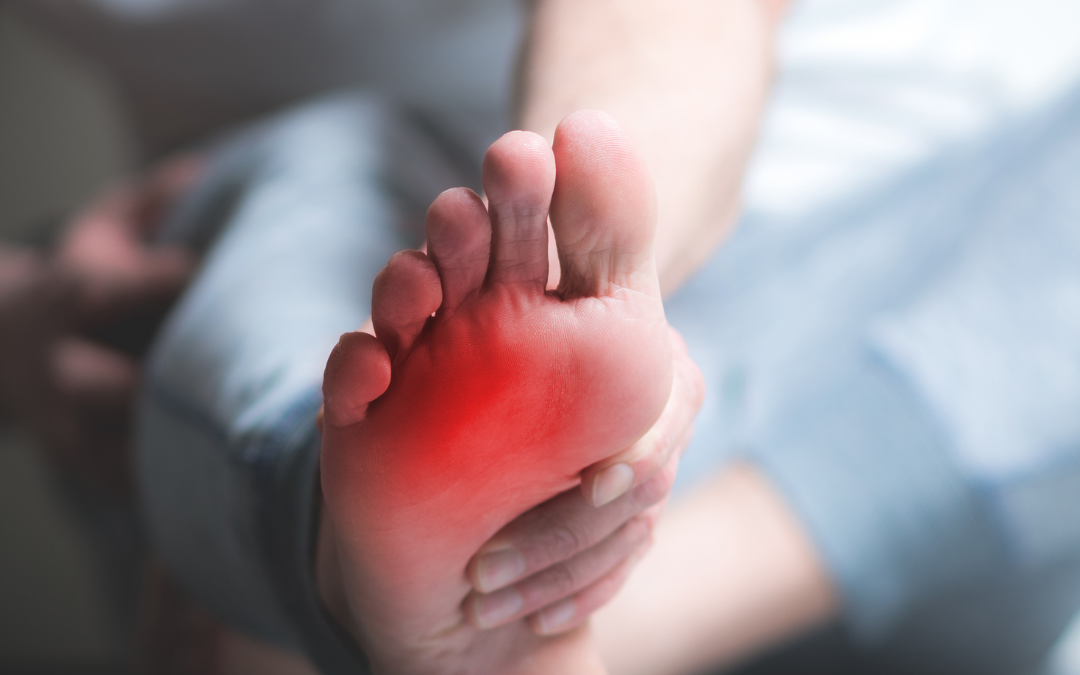Symptoms
If you’ve been dealing with Morton’s Neuroma you may have some of these symptoms:
- Feeling like there is a rock at the bottom of your shoe or a wrinkle in your sock
- Burning sensation in the ball of your foot
- Numbness or tingling in a specific spot near the center of the ball of your foot
- Pain that gets worse when you wear shoes that are tight
- Pain that gets worse when doing strenuous activities such as running
Morton’s Neuroma involves fibrosis and enlargement of the plantar nerve between your 3rd and 4th toe knuckles (or in 20% of cases it occurs between your 2nd and 3rd toe knuckles).
In someone with Morton’s Neuroma, the diameter of the fibrotic nerve averages 5.3mm. In people with a fibrotic nerve that is asymptomatic, the diameter is an average of 4.1mm. So there’s only a 1.2mm difference between symptomatic and asymptomatic individuals on average!
Contributing Factors
So what can contribute to having Morton’s Neuroma?
Poor push off when walking/running, too much pressure under your forefoot based on the way you walk/run, and ineffective weight bearing through the tripod of your foot can all be factors that exacerbate Morton’s Neuroma.
The good news is that these are all things you can improve with the right plan.
Solutions to Address Root Cause
I recommend trying these FIRST since they address mechanical factors and the root cause of the problem:
- Train your foot to ground through a wide stable tripod at the big toe knuckle, little toe knuckle and heel (if you ground through a smaller foot tripod this is less stable and can increase pressure where the neuroma is)
- Train the important segments of your walking pattern (move well from the ground up which helps Morton’s Neuroma and other foot problems)
- Reduce forefoot dominance in your walking and running pattern since that places extra pressure where the Neuroma is
- Where shoes with a wide toe box. Minimalist shoes may be too thin and flat when your symptoms are acute but some brands offer a natural shoe shape with a wide toe box and cushioning such as Altra
- Wear shoes with little to no elevation in the heel since an elevated heel increases pressure on the forefoot
Other Ways to Help
These do not directly address the root cause of Morton’s Neuroma but can help calm the symptoms;
- Heat (sometimes ice is recommended but since this is an ischemic disorder that may not be a good idea)
- Massage restricted areas AROUND not on the neuroma
- Shockwave therapy may help but its only about 50% effective, is expensive and can take up to 10 sessions
- Metatarsal Pad to reduce pressure on the neuroma and/or shoes with good cushioning
- Surgery to reduce size of the fibrotic nerve (neurolysis) or remove the nerve (neurectomy). Surgery should be last resort
If you want to improve the way you ground through your foot tripod and work on your walking or running mechanics, this can easily be done online since it is movement based. I do this with the clients in my Foundations Coaching Program. If you have any questions or want more info book a free consult on this website!


Recent Comments